Optimal Timing for Grub Treatment in Lawn Care
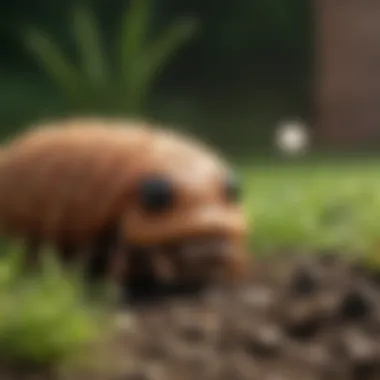
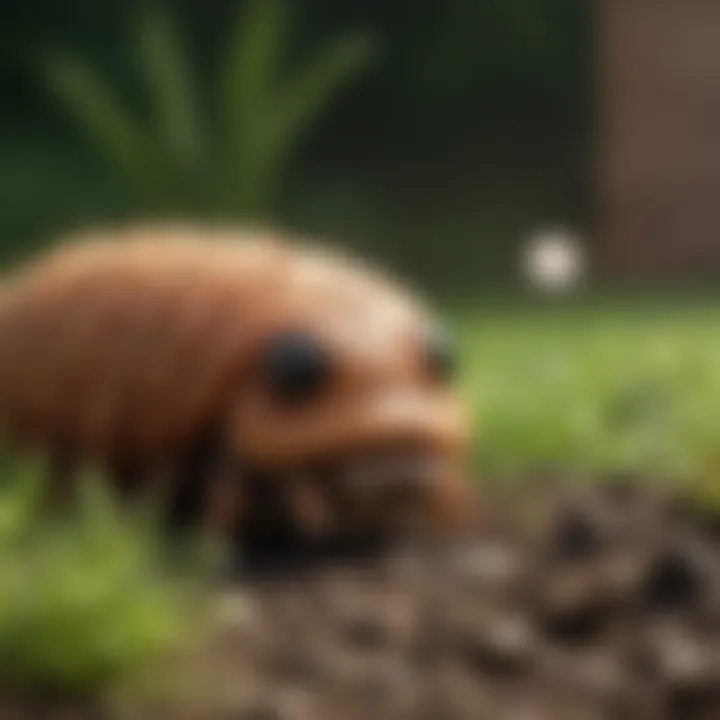
Intro
Effective lawn care is intricately linked to understanding the behavior of pests like grubs. These larvae, primarily of beetles such as the Japanese beetle, can wreak havoc on lawns if not dealt with in a timely manner. Knowing how to identify, treat, and prevent grub damage is essential for homeowners seeking a lush, healthy lawn. This article will explore the life cycle of grubs, the best times to apply treatments, and how weather conditions can influence these decisions.
Through strategic treatment approaches and informed timing, homeowners will not only safeguard their lawns but also promote an overall healthier outdoor environment. Prevention and timely interventions play a pivotal role in effective lawn maintenance.
Lifecycle of Grubs
Understanding the lifecycle of grubs is the first step in effectively managing their populations. Grubs undergo several stages:
- Egg Stage: In late spring or early summer, adult beetles lay eggs in the soil.
- Larval Stage: Eggs hatch into larvae, the grubs, which feed on grassroots during late summer.
- Pupal Stage: After a feeding period, grubs enter a pupal stage through fall and winter, becoming adults by spring.
This cycle implies that the most destructive feeding occurs during the late summer months when grubs are at their largest and therefore most damaging. Recognizing this cycle helps in pinpointing the optimal treatment windows.
Optimal Timing for Treatment
When considering grub control, timing is crucial. Generally, the best times for interventions fall within specific periods:
- Pre-emergence Treatment: Applying a preventive treatment in early spring can help target the eggs before they hatch, reducing larval populations.
- Peak Feeding Period: If you miss the spring treatment, the late summer and early fall becomes critical. During this time, applying a curative treatment can counteract the damage caused by mature grubs before they transition to their pupal state.
Homeowners should do their research or consult with lawn care professionals about specific treatment options during these vital periods to best fit their lawn care strategy.
Impact of Weather Conditions
Weather plays a significant role in grub infestation and treatment effectiveness. Conditions such as rainfall, humidity, and temperature directly affect the lifecycle and behavior of grubs. During damp seasons, grubs may thrive more, increasing the urgency for treatment. Similarly, dry spells can lead to stress in grass, making lawns more susceptible to grub damage.
It is advisable for homeowners to monitor their local weather patterns while planning grub treatments. Implementing precautions according to seasonal changes can enhance the overall health of the lawn.
Practical Tips
To ensure a healthy lawn, the following practical tips can aid effective grub management:
- Regular Monitoring: Keep an eye on your lawn for signs of grub activity, such as brown patches or areas that pull up easily.
- Soil Health Maintenance: Healthy soil supports strong grass, making it less vulnerable to pest infestations. Testing your soil for nutrient balance is beneficial.
- Treatment Selection: Choose between chemical and organic treatments based on your specific need, lawn conditions, and environmental responsibility.
"Regular monitoring and timely interventions are key in preventing grub infestations."
In summary, understanding the lifecycle of grubs, recognizing the optimal timing for treatments, and considering weather impacts are essential aspects of maintaining a healthy lawn. By prioritizing preventive measures and timely actions, homeowners can effectively protect and enrich their outdoor spaces.
Understanding Grubs in Lawn Care
Grubs are a critical concern for lawn care enthusiasts and homeowners alike. Understanding grubs and their impact on lawn health is essential for effective maintenance. Grubs can cause significant damage to lawns by feeding on roots and organic matter. This can lead to brown patches and dying grass, which detract from the overall aesthetic appeal of a yard.
Recognizing specific elements and benefits related to grubs is key. Homeowners need to know what grubs are and how they affect their lawns. If untreated, infestations can spread quickly, leading to more extensive damage and costly repairs. By understanding grubs, homeowners can implement timely preventive measures and treatments, keeping their lawns healthy and vibrant.
Furthermore, considering the environmental factors influencing grub populations is essential for lawn care. These include moisture levels, temperatures, and seasonal changes. The more informed one is about grubs, the better equipped they are to handle infestations and ensure a flourishing lawn.
"Understanding the lifecycle and habits of grubs allows for timely interventions that can protect a lawn from severe damage."
It is crucial to understand the types of grubs that might be present. It helps in identifying the right treatments and methods to mitigate their impact on the lawn.
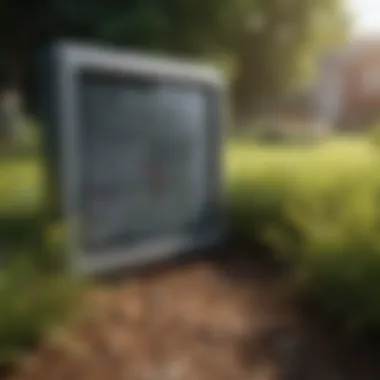
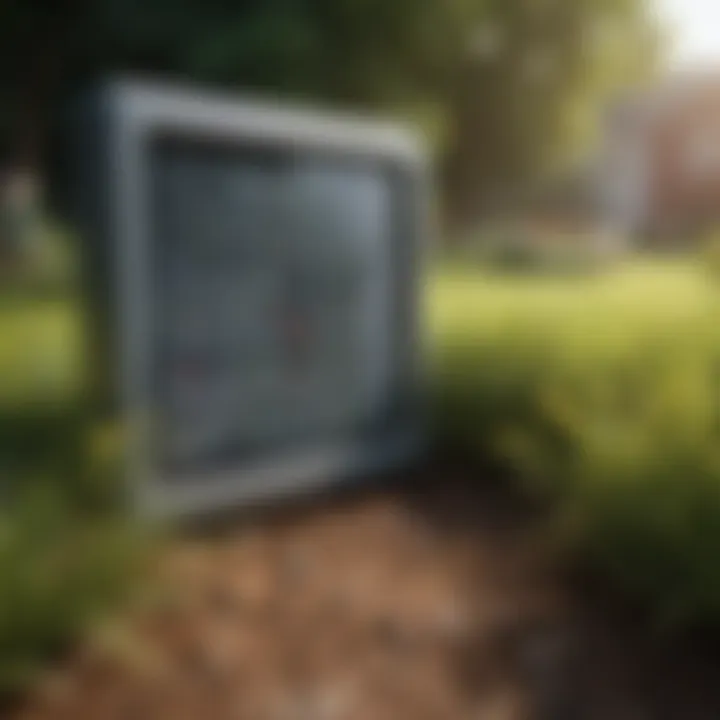
What Are Grubs?
Grubs are the larval stage of scarab beetles, such as the Japanese beetle and the European chafer. They appear as C-shaped, white body segments with an underdeveloped head. Commonly, they can be found in the top layers of the soil.
Typically, grubs feed on organic matter within the soil and the roots of grass. Their feeding habits can cause extensive damage to lawns. As they eat the roots, the grass becomes weaker, ultimately resulting in brown patches that signify dying grass.
Common Types of Grubs
There are several types of grubs that homeowners may encounter, each with distinct characteristics.
- Japanese Beetle Grubs: These are among the most common. They are light-colored and have stubby bodies. Their presence often coincides with the appearance of adult Japanese beetles in the summer months.
- European Chafer Grubs: These are slightly larger and more elongated, often causing significant damage due to their feeding behavior.
- May Beetle Grubs: Recognizable by their large size, these grubs also feed on grass roots, creating patches of brown in affected areas.
Understanding these types can aid in proper identification and treatment.
Grub Lifecycle Stages
The lifecycle of a grub includes several stages, each of which provides insights into their behavior and treatment strategies.
- Egg Stage: Adult beetles lay their eggs in the soil, typically in late spring or early summer.
- Larval Stage: The eggs hatch into grubs, beginning their feeding cycle primarily in the late summer and early fall. This stage is when most damage to lawns occurs.
- Pupal Stage: After several weeks of feeding, grubs transform into pupae in the soil.
- Adult Stage: Finally, they emerge as adult beetles the following spring, continuing the cycle.
Homeowners can take advantage of this lifecycle by focusing on treatments during specific stages to effectively manage grub populations in their lawns.
Signs of Grub Infestation
Recognizing the signs of grub infestation is crucial for maintaining a healthy lawn. Early identification can prevent extensive damage, sparing homeowners from significant repair costs and labor. Grubs, the larval stage of beetles, can decimate grass if populations grow unchecked. They feed on grass roots, leading to patches of dead or dying turf. Awareness of these signs can enable timely treatments and necessary interventions, helping to preserve the aesthetic and functional attributes of a lawn.
Symptoms of Damage
The most noticeable symptoms of grub damage manifest as irregular patches of brown grass. These patches may appear wilting or thinning. Lawns with heavily infested areas often suffer from poor grass resilience. Pulling at the grass in these regions can reveal if it comes away easily from the soil. This action indicates that roots are compromised or entirely consumed by grubs.
Other symptoms to watch out for include increasing presence of wildlife. Animals like raccoons, skunks, or birds may dig at the grass or forage for larvae, suggesting the grass below is harboring pests. Moreover, if there is a persistent lack of healthy growth in some areas, it could mean grubs are inhibiting proper root development. Seasonal monitoring is essential to get ahead of these signs, as quick action can be the difference between a simple lawn treatment and extensive restoration work.
Identifying Grub Presence
To effectively identify grub presence, conducting a simple examination of the lawn can be beneficial. Homeowners can take a small shovel or a spade and remove a section of turf approximately one foot square and three to four inches deep.
Look for several indicators:
- White grubs: These are C-shaped and usually have a creamy white color with a brown head, measuring about one inch long at maturity.
- Soil moisture: Check if the soil is dry; dry conditions can amplify grub activity as they may come closer to the surface in search of moisture.
- Presence of adult beetles: In warm months, adult beetles will emerge and lay eggs, typically signaling a resurgence of grub populations.
Using these methods to identify grubs not only helps to confirm infestation but also assists in planning effective management. Ongoing vigilance ensures that lawns remain healthy and attractive throughout the seasons. Monitoring for these signs is not just reactive but also proactive in caring for your lawn.
Timing Treatments Effectively
Understanding when to apply treatments for grubs is essential for effective lawn care. Grubs, if left unchecked, can cause significant damage to lawns, leading to costly repairs and a decline in lawn health. Timing is crucial because it aligns treatment efforts with the lifecycle stages of grubs. Additionally, proper timing can enhance the effectiveness of both chemical and biological control methods while minimizing potential harm to beneficial insects.
Effective timing for grub treatments can improve lawn resilience and ensure that the grass recovers promptly. Homeowners should consider factors such as local climate conditions, the specific type of grubs present, and the treatment method being used. This section will explore how treatment timing varies through the seasons, promoting an active approach to lawn maintenance.
Spring: Initial Treatment Phase
Spring is a critical time for initial grub treatments, particularly as the ground begins to warm. During this phase, young grubs are emerging and are most vulnerable to treatments. Applying a preventative insecticide in early spring helps to reduce the population before it becomes a problem.
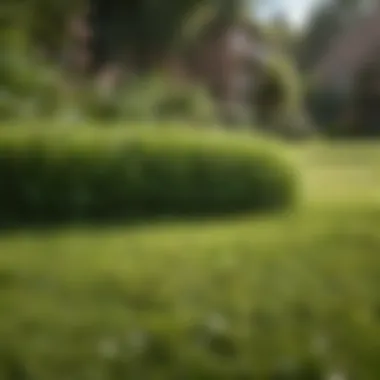
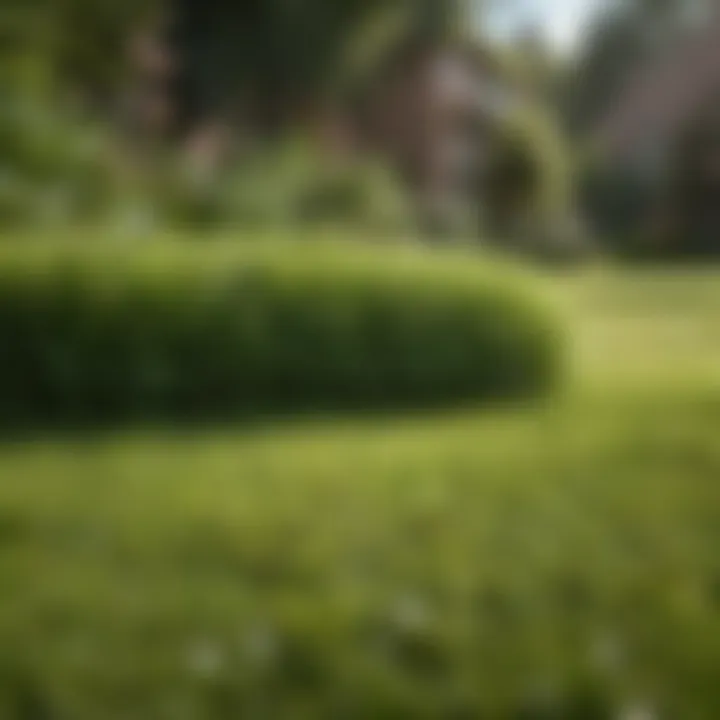
Moreover, lawn care during this time allows for a proactive approach, preventing larger outbreaks later in the season. Homeowners should keep an eye on the soil temperature, as treatments should be deployed once soil temperatures reach about 55°F. This timing maximizes the effectiveness of the treatment by targeting the newly hatching grubs.
Summer: Monitoring and Emergence
As summer arrives, the active stage of grubs is evident. This is a period not primarily for application but for monitoring. Homeowners should inspect their lawns for signs of infestation during the summer months. Symptoms such as brown patches or a lack of responsiveness to foot traffic may indicate grub activity.
If damage is noted, taking the appropriate action is critical. Some treatment options may include targeted chemical application or introducing natural predators. It is key to combine monitoring with any intervention to ensure minimal impact on the lawn's overall health. Continuous monitoring can help gauge whether interventions are necessary and guide decisions for the subsequent fall treatment phase.
Fall: Preemptive Applications
During the fall, before temperatures consistently drop, it is advisable to take preemptive measures against grubs. At this stage, grubs may be preparing for the winter, making them more susceptible to treatments. A late fall application of insecticides can target the immature grubs before they settle deep into the soil to survive the colder months.
Applying treatments at this time can significantly reduce grub populations in the spring when they become active again. Additionally, fall is an excellent time for homeowners to reseed or fertilize their lawns. This dual approach not only manages grub populations but also promotes healthy grass growth, resulting in a more resilient lawn come spring.
Effective timing of interventions can not only mitigate the risk of grubs but also enhance the overall health of your lawn through the seasons. Every lawn deserves thoughtful attention to its unique conditions.
Choosing Treatment Methods
Selecting the correct treatment methods plays a pivotal role in effectively managing grub populations in lawns. This choice can significantly influence the health and longevity of your grass. Homeowners need to evaluate the available options carefully, weighing the specific elements, benefits, and considerations associated with each method.
Given the various treatments, understanding the dynamics of lawn care helps in determining the best fit. This ensures that the treatment is not only effective but also environmentally responsible. Each method has its unique approach and presents advantages that homeowners should consider.
Chemical Treatments
Chemical treatments are perhaps the most common approach for tackling grubs. They can offer quick relief from infestations. Many chemical products come in granular or liquid forms, providing flexibility in application. The main advantage of chemical treatments is their efficacy in killing grubs at various lifecycle stages.
Before choosing a chemical treatment, it is crucial to read the label carefully for concentration and guidelines. Over-application can harm beneficial insects and may lead to resistance in grub populations. Moreover, the timing of application is essential. It is best to apply these treatments during the peak grub activity periods, typically late summer or early fall, when grubs are younger and more vulnerable.
In addition, using chemicals responsibly aligns with integrated pest management, which considers environmental impacts. Homeowners should seek products that are target-specific to minimize broader ecological effects while effectively treating their lawn.
Biological Control Options
Biological control options provide a more natural path for managing grub infestations. These methods include utilizing natural predators, such as nematodes, or utilizing microorganisms that target grubs. Here, the objective is to enhance the natural ecosystem of the lawn.
Nematodes are microscopic worms that invade the bodies of grubs, effectively controlling their populations. This option generally promotes a healthier soil environment and fosters biodiversity. Biological treatments usually have lower risks associated with them, making them a suitable choice for homeowners who prioritize environmentally friendly lawn care practices.
The effectiveness of biological control depends largely on soil temperature and moisture, so monitoring these conditions is essential to ensure success. Implementing such methods not only reduces grub numbers but also contributes to a more balanced ecosystem in the lawn.
Cultural Practices for Prevention
Cultural practices for preventing grub infestations emphasize lawn management to create unfavorable conditions for grubs. These methods include proper watering, maintaining healthy soil, and choosing the right grass varieties that are more resistant to infestations.
Adopting practices such as core aeration can improve soil drainage and root growth. Additionally, overseeding with pest-resistant varieties can lower the likelihood of grub populations. Regularly mowing and properly fertilizing the lawn also play significant roles in establishing a robust turf that can naturally resist grub infestations.
Education on grub behavior is beneficial; for example, recognizing conditions that favor grub development can help in prevention. As such, staying informed about seasonal shifts and maintaining a proactive approach can help ensure a healthy lawn over time.
"Preventive measures are always more effective than treatment."
Weather and Environmental Factors


Understanding weather and environmental factors is essential for effective grub management in lawns. These factors significantly influence the lifecycle of grubs and their development stages. Homeowners can make better decisions regarding timing and treatment methods by considering these elements.
Impact of Temperature on Grub Lifecycle
Temperature plays a crucial role in the lifecycle of grubs. Generally, warmer weather accelerates their growth and development. For instance, when soil temperatures reach 65°F (18°C) or above, grubs become more active. This is when they begin to feed extensively on grassroots, leading to noticeable lawn damage.
It is important for homeowners to monitor local temperatures, especially in late spring and early autumn. Higher temperatures can result in an earlier emergence of grubs, while cooler conditions may delay their growth. Understanding local climate trends can help homeowners anticipate grub activity and time their treatments accordingly.
"Monitoring temperature changes provides valuable insight into when grubs are likely to be at their most destructive stage."
Effects of Soil Moisture
Soil moisture also affects grub activity and treatment effectiveness. Grubs thrive in moist environments, making particularly wet soils conducive to their development. Conversely, drier conditions can inhibit their feeding and potential establishment in the lawn.
Effective lawn care practices should consider soil moisture levels. For instance, if heavy rainfall occurs, it is advisable to check for grubs soon after. These pests may be more prevalent during periods of increased moisture. Treatments can be more effective when applied to lawns that are kept adequately moist, as this ensures better absorption of chemical or biological control methods.
Post-Treatment Lawn Care
Understanding post-treatment care is crucial for maintaining a healthy lawn after addressing grub issues. Once the appropriate treatments are applied, it is essential to monitor and support the lawn’s recovery. Neglecting this phase can lead to further infestations or prolonged damage. Attention to post-treatment practices not only aids grass recovery but also reinforces the overall health of the lawn, ensuring resilience against pests and diseases.
Best Practices for Grass Recovery
After treatment, the lawn needs time and proper conditions to recover. Here are essential practices:
- Watering Regularly: Keep the soil moist. Watering in the mornings helps grassroots absorb moisture adequately. Avoid heavy watering that could run off.
- Fertilizing: Apply a balanced fertilizer to boost nutrient availability. nitrogen, phosphorus, and potassium can help rejuvenate the grass.
- Mowing: Allow grass to grow slightly taller before the first mow. Taller grass can shade and protect the roots, promoting better recovery.
- Aeration: Consider aerating the lawn. This reduces soil compaction and improves air and water flow in the soil. It is particularly helpful after treating grubs, as it allows new roots to grow more efficiently.
Implementing these practices can significantly speed up recovery, leading to a lush and healthy lawn.
Monitoring for Re-infestation
Continual surveillance is vital following treatment. You must be vigilant about any signs of re-infestation. Consider the following steps:
- Regular Inspections: Check for signs of grub activity at least once a month. Look for areas where grass appears wilting or discolored.
- Soil Testing: Conduct soil tests to monitor nutrient levels. This way, you will ensure the lawn remains balanced and healthy.
- Watch Weather Conditions: Keep an eye on the weather. Warm, damp conditions can encourage grubs. If the weather confirms these conditions arise, you may need to consider another treatment.
Regular monitoring can prevent a small problem from becoming a significant issue. Ignoring the signs of reinfestation may lead to repeating the treatment process.
In summary, post-treatment lawn care must not be an afterthought. Adequate watering, fertilizing, and monitoring are integral to restoring the health of the lawn. Your diligence in these practices will contribute to a better lawn ecosystem and protect against future grub problems.
Ending
Understanding the optimal timing for grub treatment is crucial for maintaining a healthy lawn. This article emphasized several key aspects regarding grub management. Correct timing can significantly reduce the risk of infestations and minimize damage. Grubs can quickly destroy a lawn, leading to extensive and costly repairs. Therefore, being proactive is essential.
Recap of Effective Grub Management
To manage grubs effectively, homeowners should focus on:
- Recognizing the lifecycle: Awareness of the various stages grubs go through enables better timing of treatments.
- Seasonal treatments: Implementing treatments during spring, summer, and fall ensures the highest effectiveness.
- Adopting diverse methods: Utilizing chemical, biological, and cultural practices together enhances overall lawn health.
Each of these points plays a role in a comprehensive approach to grub management, enabling homeowners to protect their green spaces efficiently.
Encouraging Healthy Lawn Practices
Maintaining a healthy lawn is not only about dealing with grubs. Homeowners can encourage resilience in their lawns through:
- Regular monitoring: Keeping a vigilant eye on lawn health allows for early intervention when issues arise.
- Soil health: Investing in soil care can lead to a stronger lawn that is less susceptible to pests.
- Proper watering: Understanding how moisture affects grub lifecycle can help optimize treatment schedules.
By incorporating these practices, homeowners can improve their lawn’s defenses against grubs and other pests. A healthy lawn is a more robust lawn, inherently better at fending off infestations without extensive use of treatments.















